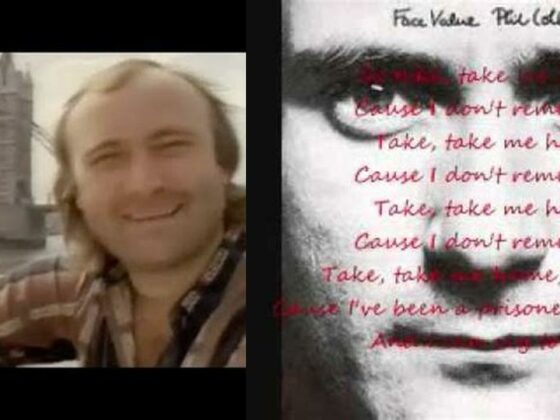Join us on a captivating journey through time, memory, and emotion as we explore Rod Stewart’s rendition of “Auld Lang Syne.” Delve into the meaning behind this timeless classic and discover the profound significance it holds. Get ready to unravel the secrets behind Rod Stewart’s emotive interpretation and gain a deeper understanding of this iconic song.
Rod Stewart’s Rendition of “Auld Lang Syne”: A Journey Through Time, Memory, and Emotion
In the realm of music, there exist songs that transcend time, becoming cultural touchstones that evoke profound emotions and memories with their timeless melodies and poignant lyrics. Among these enduring classics, Rod Stewart’s rendition of “Auld Lang Syne” stands as a beacon of nostalgia, camaraderie, and the enduring bonds of friendship.
A Song Steeped in History and Sentiment
Originating from Scotland, “Auld Lang Syne” is a traditional folk song that has been passed down through generations, embodying the essence of reflection, remembrance, and the passage of time. The song’s title, derived from Scottish dialect, translates to “old long since” or “long, long ago,” hinting at its exploration of cherished memories and the significance of preserving past connections.
The lyrics, penned by Scottish poet Robert Burns in the 18th century, pose a series of rhetorical questions, urging listeners to recall old friendships, moments of joy, and the shared experiences that have shaped their lives. The chorus, with its poignant inquiry, “Should auld acquaintance be forgot,” serves as a catalyst for introspection, prompting individuals to ponder the impact of relationships on their life’s journey.
Rod Stewart’s Soulful Interpretation: A Blend of Warmth and Nostalgia
Rod Stewart’s rendition of “Auld Lang Syne” captures the song’s essence while infusing it with his signature soulful warmth. Featured on his 1990 Christmas album, “Merry Christmas, Baby,” Stewart’s interpretation adds a layer of emotional depth to the classic melody, evoking a sense of longing and melancholic reflection.
Stewart’s vocals, rich and emotive, convey the song’s message with sincerity and authenticity. His heartfelt delivery adds a personal touch, inviting listeners to embark on a journey through their own memories and emotions as the song’s narrative unfolds.
Universal Themes That Resonate Across Cultures
The enduring popularity of “Auld Lang Syne” lies in its universal themes that transcend cultural and geographical boundaries. The song’s exploration of remembrance, camaraderie, and the passage of time resonates with people from all walks of life, regardless of their background or beliefs.
The lyrics, with their emphasis on cherishing old friendships and the act of sharing kindness, evoke a sense of camaraderie and togetherness. The song’s message of unity and goodwill has made it a staple at New Year’s Eve celebrations worldwide, serving as a unifying anthem that binds people together as they bid farewell to the old year and embrace the new.
A Reminder of Enduring Connections and the Passage of Time
“Auld Lang Syne” serves as a poignant reminder of the enduring nature of friendships and the deep impact that connections can have on our lives. The song’s message of remembrance and appreciation encourages individuals to cherish the bonds they have forged over time and to recognize the significance of the experiences they have shared.
The song also acknowledges the passage of time and the bittersweet nature of change. As individuals navigate the ever-flowing river of life, they may encounter moments of loss and separation. Yet, “Auld Lang Syne” offers comfort in knowing that connections can endure and hold deep meaning despite the relentless march of time.
Conclusion: A Timeless Classic That Continues to Inspire
Rod Stewart’s rendition of “Auld Lang Syne” stands as a timeless classic, a musical masterpiece that captures the essence of nostalgia, camaraderie, and the enduring bonds of friendship. The song’s poignant lyrics, coupled with Stewart’s soulful interpretation, have touched the hearts of generations, making it a beloved anthem that continues to inspire and resonate with listeners worldwide.
As the echoes of “Auld Lang Syne” reverberate through the halls of time, it serves as a reminder to cherish the relationships that enrich our lives, to embrace the memories that shape our identities, and to face the future with a renewed sense of hope and optimism.
Questions & FAQ about Rod Stewart’s Rendition of “Auld Lang Syne”
What is the significance of Rod Stewart’s rendition of “Auld Lang Syne”?
Rod Stewart’s rendition of “Auld Lang Syne” is a cultural touchstone that evokes profound emotions and memories with its timeless melodies and poignant lyrics, serving as a beacon of nostalgia, camaraderie, and the enduring bonds of friendship.
What is the origin of “Auld Lang Syne”?
“Auld Lang Syne” originates from Scotland and is a traditional folk song that has been passed down through generations, embodying the essence of reflection, remembrance, and the passage of time.
What does the title “Auld Lang Syne” translate to?
The title “Auld Lang Syne” is derived from Scottish dialect and translates to “old long since” or “long, long ago,” hinting at its exploration of cherished memories and the significance of preserving past connections.
Who penned the lyrics of “Auld Lang Syne”?
The lyrics of “Auld Lang Syne” were penned by Scottish poet Robert Burns in the 18th century.
What emotions and themes does “Auld Lang Syne” explore?
“Auld Lang Syne” explores emotions of nostalgia, camaraderie, and the enduring bonds of friendship, as well as themes of reflection, remembrance, and the passage of time.
What is the cultural significance of “Auld Lang Syne”?
“Auld Lang Syne” is a cultural touchstone that transcends time, evoking profound emotions and memories with its timeless melodies and poignant lyrics, and symbolizing the preservation of cherished memories and past connections.


